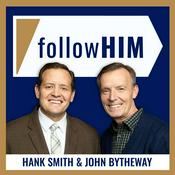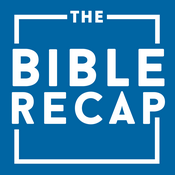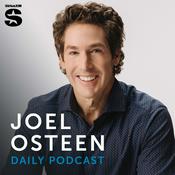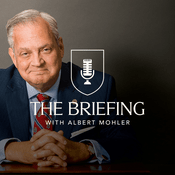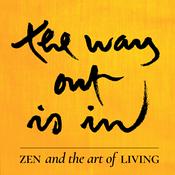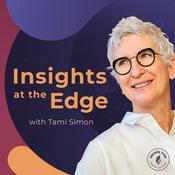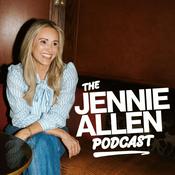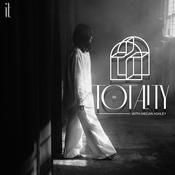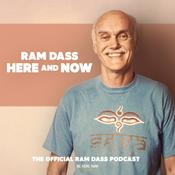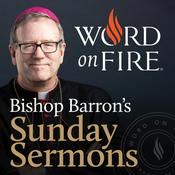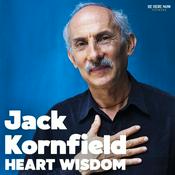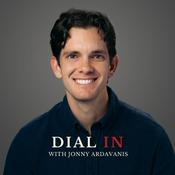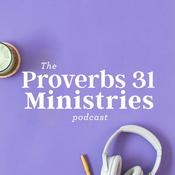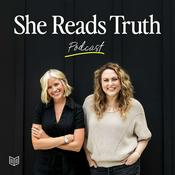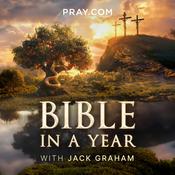57 episodes
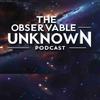
Interlude XXVIII - Metaphor as Neural Bridge: How Meaning Crosses from Body to Mind
12/17/2025 | 4 mins.
In this interlude of The Observable Unknown, Dr. Juan Carlos Rey continues the Language Arc by examining how language does not merely describe reality, but actively organizes perception, emotion, and possibility. Drawing from linguistics, cognitive science, and philosophy of mind, this episode explores how metaphor, grammar, and semantic framing shape the way consciousness encounters the world. Research in psycholinguistics and neuroscience suggests that the words we habitually use quietly guide attention, memory, and emotional interpretation long before deliberate reasoning begins. Listeners are guided through how linguistic structures influence moral judgment, time perception, identity formation, and even bodily experience. From studies on metaphor processing in the brain to cross-cultural research on how different languages encode agency, causality, and responsibility, this interlude shows that language functions as a perceptual instrument rather than a neutral label-maker. Dr. Rey reflects on how symbolic systems become internal architectures. Language becomes the scaffolding upon which thought stabilizes, fragments, or evolves. When language changes, the self subtly reorganizes. This has implications for therapy, education, spiritual practice, and cultural dialogue, particularly in moments of crisis or transformation. Interlude XXVIII invites the listener to notice how words move through the body and mind, how phrases rehearse reality before action occurs, and how silence itself becomes meaningful once language loosens its grip. This episode is part of an ongoing inquiry into consciousness, meaning, and the biological foundations of inner life, offered with scholarly care and contemplative pacing. For reflections or questions, write to [email protected] or text 3366755836. If this work resonates, please consider leaving a rating or review wherever you listen.

Interlude XXVII - Language as World-Maker: How Words Shape Reality
12/16/2025 | 4 mins.
Language does not merely describe reality - it actively constructs it. In Interlude XXVII of The Observable Unknown, Dr. Juan Carlos Rey of crowscupboard.com examines how language functions as a cognitive and perceptual architecture, shaping not only communication, but memory, attention, identity, and moral reasoning itself. Drawing from linguistics, neuroscience, anthropology, and philosophy, this episode explores how the words we inherit silently sculpt the world we believe we inhabit. This interlude investigates the Sapir-Whorf hypothesis, modern research in linguistic relativity, and neurocognitive studies showing that language alters perceptual discrimination, emotional regulation, and even pain processing. Listeners are guided through how grammatical tense shapes temporal awareness, how metaphor governs moral judgment, and how naming stabilizes experience - sometimes at the cost of flexibility and insight. Dr. Rey traces how language organizes perception into categories that feel natural, inevitable, and true - while revealing that these structures are learned, contingent, and culturally encoded. The episode also explores what happens when language breaks down, loosens, or is deliberately reshaped through poetry, ritual, and contemplative practice. At its core, this interlude asks a deceptively simple question: If language builds the world we experience, who are we when language pauses? The Observable Unknown is a long-form contemplative science podcast hosted by Dr. Juan Carlos Rey of crowscupboard.com, exploring consciousness, neuroscience, myth, and the inner architecture of human experience with intellectual rigor and poetic clarity. For reflections or questions, email [email protected] or text 3366755836. And wherever you listen, please consider leaving a review and rating - your words help this work reach those searching for depth without distortion.

Interlude XXVI - The Echoing Mind: When Thought Speaks
12/13/2025 | 7 mins.
When you hear yourself think, who do you believe is speaking? In this interlude of The Observable Unknown, Dr. Juan Carlos Rey explores inner speech as a neurological, psychological, and philosophical phenomenon. Drawing on the work of Lev Vygotsky, contemporary neuroimaging research on Broca’s region, Wernicke’s area, the supplementary motor area, and auditory cortex, and the provocative hypothesis of Julian Jaynes, this episode examines how language becomes internalized, how thought acquires a voice, and how the sense of self may emerge from dialogue rather than silence. Listeners are guided through research on subvocalization, working memory, and the phonological loop, alongside clinical studies on auditory verbal hallucinations and contemplative practices that soften or reshape inner narration. The episode contrasts pathology with practice, showing how the same neural machinery that produces distressing voices can, under other conditions, be trained toward clarity, restraint, and presence. Rather than treating the inner voice as a flaw or illusion, this interlude frames it as a living inheritance of social speech, cultural memory, and biological function. Thought may not be a solitary act, but a chorus negotiated within the brain. The Observable Unknown is an intellectual and contemplative series hosted by Dr. Juan Carlos Rey of crowscupboard.com, exploring consciousness at the intersection of neuroscience, philosophy, myth, and lived experience. For reflections or questions, write to [email protected] or text 3366755836. If this episode resonated with you, please leave a review and rating wherever you listen.

Interlude XXV – Grammars of Perception
12/11/2025 | 10 mins.
Interlude XXV of The Observable Unknown opens a new arc at the crossroads of linguistics, neuroscience, and consciousness studies. In this episode, Dr. Juan Carlos Rey of crowscupboard.com examines how language does far more than label experience. It organizes perception itself. Drawing from the work of linguists such as Leonard Talmy, George Lakoff, Lera Boroditsky, and contemporary neurolinguistic research, this interlude investigates the ways grammar, metaphor, and syntactic structure silently shape the architecture of awareness. Listeners are invited to explore how linguistic categories channel cognition, how verbs can redirect attention, and how metaphor functions as a cognitive operating system rather than a decorative feature of speech. Dr. Rey examines studies that demonstrate how speakers of different languages track space, time, agency, and emotion through distinct neural pathways, and how these grammatical habits modulate everything from moral judgment to sensory processing. The interlude also addresses the deeper question beneath the science: If language influences perception, does each language offer a different window on reality? And if so, what happens to consciousness when a language evolves, fades, or is culturally suppressed? This exploration includes a discussion of endangered languages, ritual speech forms, and the neurological flexibility that allows bilingual speakers to shift perceptual modes. As with every interlude in the neuroscience arc, Grammars of Perception blends empirical research with reflective inquiry. The goal is not to promote linguistic determinism but to illuminate the subtle reciprocity between words and worlds, mapping how the brain’s linguistic circuitry becomes the scaffolding for meaning. Listeners seeking a richer understanding of consciousness, cognition, language, and human possibility will find this episode a contemplative and intellectually rigorous guide into the subtle mechanics of mind.

Dr. Robert Atkinson
12/07/2025 | 44 mins.
Dr. Robert Atkinson stands at the confluence of myth, developmental psychology, and the perennial human hunger for wholeness. An award-winning author, educator, and architect of what he calls unitive consciousness, Dr. Atkinson writes with the calm authority of one who has spent a lifetime apprenticed to depth, meaning, and the evolutionary arc of the human story. His newest work, The Way of Unity: Essential Principles and Preconditions for Peace, is a sweeping synthesis of sacred cosmologies, cross-cultural wisdom traditions, and the evolutionary sciences. This text proposes that unity is not merely an ethical aspiration but a structural principle woven into the fabric of reality itself. Through nine unitive principles and a global tapestry of community models already living these truths, Atkinson offers a roadmap for moving from fracture to coherence, from division to planetary flourishing. His oeuvre spans eleven other books, including The Story of Our Time, A New Story of Wholeness, and the Nautilus Award–winning Our Moment of Choice. With a doctorate in cross-cultural human development from the University of Pennsylvania and a postdoctoral fellowship at the University of Chicago, Dr. Atkinson has been a pioneering voice in storytelling research, personal myth-making, and the evolution of consciousness. He is the founder of the One Planet Peace Forum and a member of the Evolutionary Leaders Circle. It is my honor to welcome to The Observable Unknown a thinker who writes at the scale of civilizations while keeping his hand gently on the human heart.
More Religion & Spirituality podcasts
Trending Religion & Spirituality podcasts
About The Observable Unknown
Listen to The Observable Unknown, The Drop the Needle Podcast and many other podcasts from around the world with the radio.net app

Get the free radio.net app
- Stations and podcasts to bookmark
- Stream via Wi-Fi or Bluetooth
- Supports Carplay & Android Auto
- Many other app features
Get the free radio.net app
- Stations and podcasts to bookmark
- Stream via Wi-Fi or Bluetooth
- Supports Carplay & Android Auto
- Many other app features


The Observable Unknown
download the app,
start listening.


